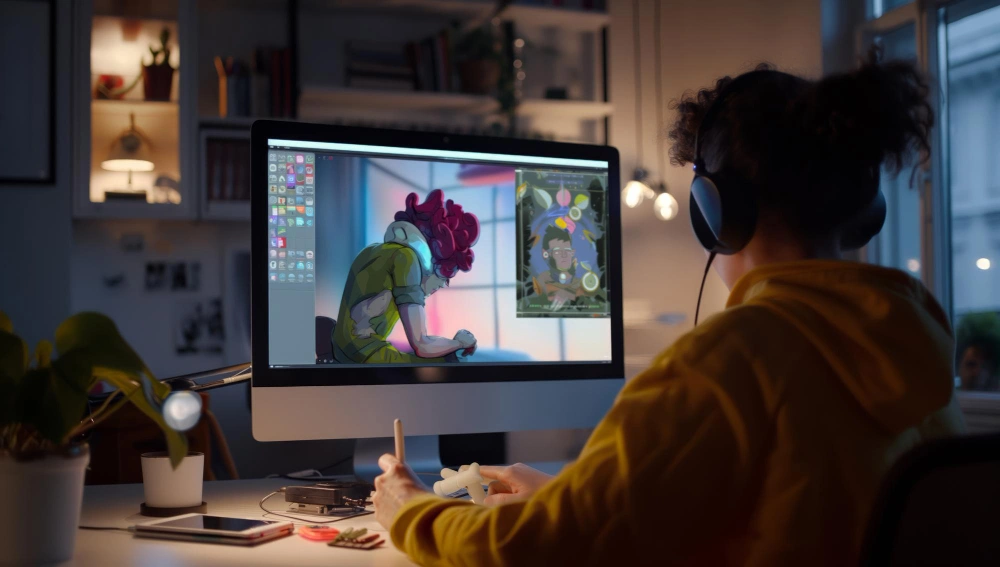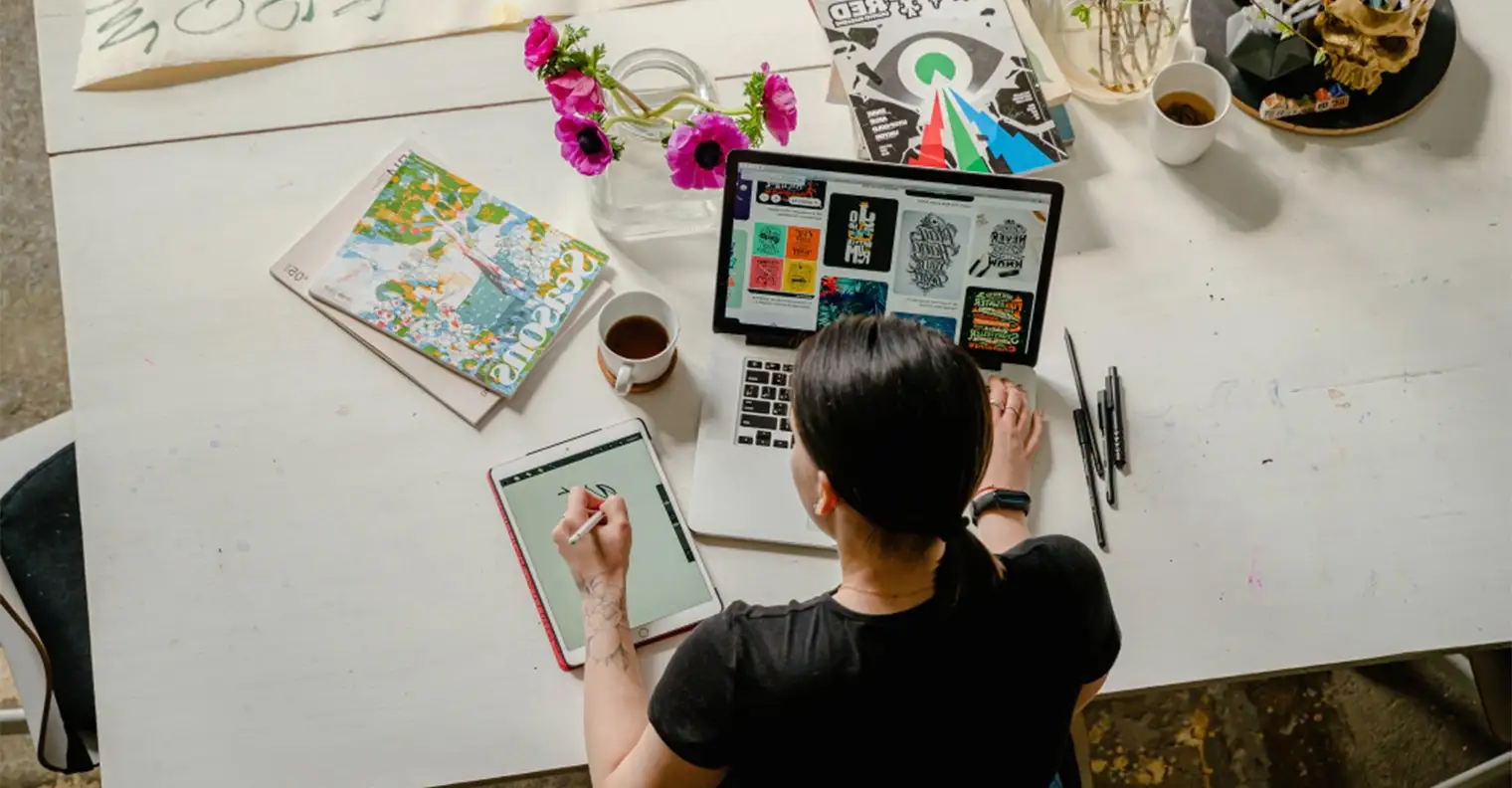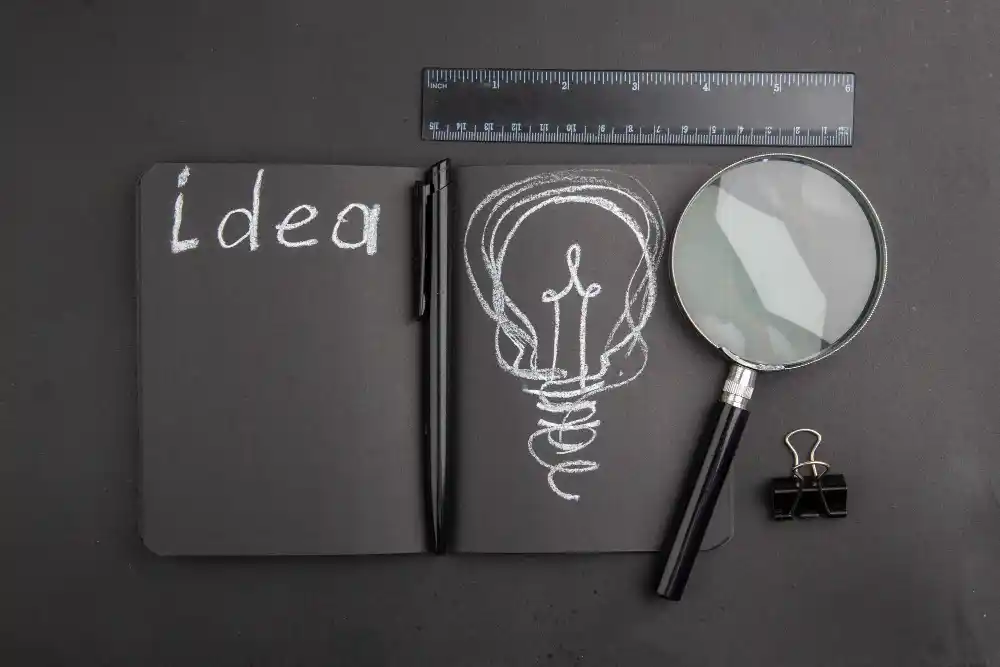Welcome to the evolving world of design, where every day brings a new wave of technology and market trends that reshape your creative landscape. In today’s fast-paced world, you’re not just keeping up with change – you’re riding its wave. The design landscape is changing rapidly, and as a designer in 2025, staying ahead of the curve is vital to your success.
Imagine waking up every day with new tools, innovative software, and new ways to express your creativity. Digital transformation isn’t something far away; it’s happening right now, impacting the way you work, think, and create. As trends evolve and technology advances at lightning speed, you need to adapt and learn constantly. It’s not just about avoiding change – it’s about staying ahead and differentiating yourself in a competitive field.
To help you navigate this dynamic landscape, this article introduces 13 key skills that will empower you to excel in the future of design. These skills cover everything from mastering modern design software and digital storytelling to understanding emerging trends like artificial intelligence and sustainable design. Each skill is chosen to boost your creativity, technical know-how, and adaptability.
By adopting these 13 essential skills for designers in 2025, you will not only be prepared for the challenges of tomorrow but also be ready to lead and innovate. Get ready to explore new horizons and transform your career as you step confidently into the future of design.
Understanding the 2025 Design Landscape
In 2025, the world of design is changing faster than ever. New technologies and shifting priorities are shaping the way you work, making it essential to stay ahead of the curve. One of the biggest game-changers is artificial intelligence (AI), which is now a vital part of design. It helps automate tasks, personalise user experiences and gives you more time to focus on creativity.
Augmented reality (AR) and virtual reality (VR) are also becoming more common, allowing you to create immersive experiences that blend the digital and physical worlds. Meanwhile, remote work has completely changed the way teams collaborate, making digital tools more important than ever.
Beyond technology, there’s a growing focus on responsible and inclusive design. Sustainability is a top priority, pushing you to use eco-friendly materials and processes. Accessibility is another important factor, ensuring your designs work for everyone, including people with disabilities. Also, ethical design is more important than ever, encouraging you to create experiences that are honest, respectful, and privacy-conscious.
Consumer expectations are also rapidly evolving. People now demand seamless, personalized digital experiences, and if a design doesn’t meet their needs, they won’t hesitate to move on. To keep up, you need to develop a diverse skill set that prepares you for these changes. That’s why it’s important to master the 13 key skills in this article. By learning them, you’ll stay competitive, create impactful designs, and thrive in the fast-changing world of 2025.
13 Skills to Help Designers Get Ahead in 2025
1. UX/UI Design Mastery

In 2025, mastering UX/UI design is essential to creating seamless and enjoyable digital experiences. Your focus should always be on the user, ensuring designs are easy to navigate and meet their needs. To do this, you need to understand their behaviour, goals and pain points so you can create interfaces that feel natural and intuitive. Research is a crucial step – interviews, surveys and usability testing help you gather information and make informed decisions.
Once you have a clear idea, start with prototyping. This allows you to test different layouts and features before finalising your design. Catching problems early saves time and improves the result. But testing doesn’t stop there – usability testing with real users helps refine your work. Getting feedback and making changes based on real interactions ensures your design is functional and enjoyable.
To work efficiently, use tools that streamline your process. Figma is great for real-time collaboration, Sketch helps with vector-based interface design, and Figma offers versatile options for designing and prototyping. These tools make it easy to bring your ideas to life.
Case studies of successful designs should be studied to improve. Look at popular apps and websites to see what works and why. Learning from real-world examples helps you apply best practices to your projects. By focusing on these skills, you’ll be ready to create user-friendly and engaging digital products in 2025.
2. AR/VR and Immersive Experience Design

In 2025, AR (augmented reality) and VR (virtual reality) are changing the way people shop, play, and learn. These technologies are no longer just futuristic concepts – they are now part of everyday life. As a designer, you have the opportunity to create immersive experiences that connect the digital and real worlds in exciting ways.
In retail, AR is making shopping more interactive. Some stores let customers virtually try on clothes, makeup, or accessories before purchasing. For example, Valentino Beauty used AR smart mirrors in New York, allowing shoppers to see how different shades of lipstick look on them without actually applying any products. This not only improved the customer experience but also increased sales.
In gaming, VR is creating fully interactive environments where players can explore, discover, and engage in digital worlds that feel real. Instead of just watching the screen, players can step inside the game and experience it from a first-person perspective, making gameplay more engaging and immersive.
In education, AR and VR are making learning even more fun and effective. Students can explore historical places, perform science experiments, or even practice medical procedures – all in a safe, virtual setting. These tools help people understand complex topics through hands-on experience rather than just reading about them.
To design great AR/VR experiences, you need to stay updated with the latest trends. Learning from real-world examples and industry experts will help you create digital experiences that feel natural and engaging. By using these technologies, you can shape the future of interactive design.
3. AI and Machine Learning Integration

In 2025, AI and machine learning are changing the way you design, making your workflow faster and more creative. AI-powered tools can handle repetitive tasks, suggest design improvements, and even generate new ideas based on trends and user preferences. This lets you focus more on creativity while letting technology do the heavy work.
Generative Design Software
AI-powered generative design can help you explore multiple design options in minutes. Instead of manually creating variations, AI tools like Recraft and Adobe Firefly generate multiple layouts, color schemes, and styles based on your input. This means you can experiment with different ideas without spending hours adjusting elements. In industries like branding, product design, and architecture, AI-generated designs are already helping professionals develop faster and more customized solutions.
Data-Driven Personalization
AI makes it easier to create personalized user experiences by analyzing data on user behaviour. This is useful for websites, mobile apps, and digital ads, where AI can adjust layouts, suggest content, or even create unique visuals based on users’ preferences. For example, Netflix and Spotify use AI to recommend movies and music, ensuring users stay engaged. As a designer, using AI for UX/UI improvements can help you create products that feel customized to each individual.
How to Get Started with AI in Design
To make full use of AI in your work, it’s important to learn the right tools. Platforms like the Interaction Design Foundation offer courses like “AI for Designers,” which teach you how to integrate AI into your creative process. You can also check out Google’s AI for Creativity and Coursera’s AI-powered design courses to understand how AI can enhance your skills.
By adopting AI-powered design tools, you can work faster, improve user experience, and stay ahead in the ever-changing world of design. Whether you’re experimenting with AI-generated art or fine-tuning layouts based on user data, AI is a powerful tool that will help you push creative boundaries.
4. Motion Graphics and Animation

Motion graphics and animation are powerful tools for storytelling and grabbing attention. Adding motion to your design helps explain complex ideas clearly and engagingly. Whether it’s a website, an advertisement, or a social media post, animated visuals can highlight important details and guide viewers through your content with ease. This makes the user experience more interactive and memorable.
To get started, explore industry-standard tools like Adobe After Effects and Blender. Adobe After Effects is widely used to create motion graphics and visual effects, offering a wide range of features for both beginners and experts. If you’re interested in 3D animation, Blender is a great open-source tool that allows you to design and animate complex models.
It’s important to understand the basics of animation to make your design look natural. Learn about concepts like timing, spacing, and easing to create smooth and realistic motion. Online tutorials and courses, such as those on School of Motion, provide beginner-friendly lessons to help you master these skills. Start by recreating simple animations and gradually move on to more advanced projects.
By incorporating motion graphics and animation into your work, you can create more engaging experiences that will capture your audience’s attention and leave a lasting impression.
5. Data Visualization and Infographic Design

11. Accessibility and Inclusive Design
Designing with accessibility and inclusivity in mind ensures that everyone, including people with disabilities, can use and enjoy your designs. This not only makes your work more ethical and user-friendly but also helps you reach a wider audience. When a design is accessible, it becomes easier to navigate, understand, and interact with, improving the experience for all users.
A great starting point is to follow the Web Content Accessibility Guidelines (WCAG). These guidelines set important standards for accessibility, covering key aspects such as text readability, color contrast, and navigation.
For example, using clear and simple fonts, ensuring proper spacing, and allowing keyboard navigation are small but impactful changes that make a big difference for users with visual or motor disabilities. Websites and apps that meet WCAG standards are not only more inclusive but also more user-friendly overall.
Using an inclusive color palette is another important step. Many people have color vision deficiencies, making it difficult to distinguish certain colors. You should ensure adequate contrast between text and background so that information remains clear and readable.
Tools like the Accessible Color Palette Generator can help you choose colors that comply with accessibility guidelines and improve visibility for all users.
To ensure that your designs meet accessibility standards, it’s essential to test them with accessibility tools. The W3C Web Accessibility Evaluation Tools list provides several resources to help you check various accessibility factors, such as text contrast, alternative text for images, and keyboard navigation. Testing ensures that your design works well for all users before it goes live.
By embracing accessibility and inclusive design, you create a better experience for everyone. These small but meaningful changes can make your designs more effective, engaging, and welcoming to a diverse audience.
12. Sustainable and Ethical Design Practices
Designing with sustainability and ethics in mind helps you create products that are not only visually appealing but also environmentally responsible and socially fair. By making thoughtful design choices, you can reduce waste, promote accessibility, and ensure your work has a positive impact.
Eco-Friendly Design Choices
One way to make your design more sustainable is to choose materials that have a low impact on the environment. For example, thermally modified wood is a durable and environmentally friendly alternative to chemically treated materials. Using recyclable and biodegradable materials in packaging and product design also helps reduce waste.
Another important strategy is to design for longevity. Instead of creating disposable products, focus on creating items that are built to last. This applies to both physical and digital design. For example, websites and apps should have clean, scalable designs that don’t require frequent major updates, reducing unnecessary resource consumption.
Ethical UI Patterns
Designing ethically means prioritizing users and ensuring that digital experiences are fair, accessible, and transparent. An example of this is user-centred design, which avoids manipulative tactics like dark patterns — tricks that force users to do things they don’t want, such as accidental subscriptions.
Instead, ethical UI focuses on clarity, consent, and giving users full control over their choices. Inclusive design is another important aspect. Not everyone interacts with design in the same way — some users have visual impairments, motor disabilities, or cognitive differences. By following the Web Content Accessibility Guidelines (WCAG) and ensuring proper color contrast, readable fonts, and keyboard navigation support, you can make your design accessible to a wider audience.
Resources on Sustainable Design Strategies
If you want to dive deeper into sustainable design, platforms like 2030 Palette provide valuable insight into creating eco-friendly designs, whether for digital interfaces or physical products. Another great resource is the Sustainable Design Toolkit and Framework, which provides guidelines and tools to help you integrate sustainability into your workflow.
By adopting sustainable and ethical design practices, you ensure that your work not only meets user needs but also contributes to a greener, fairer world. Small choices – like using eco-friendly materials, designing for longevity, and making interfaces accessible – can have a significant positive impact.
13. Continuous Learning and Adaptability
Recommended Resources
- Online Courses: Coursera, Skillshare, Udemy
- Design Assets: Envato, Bisckut
- Design Tools: Figma, Canva, Adobe Creative Cloud
Conclusion: Future-Proof Your Design Career
The design industry is evolving fast, and staying ahead means continuously learning and adapting. By mastering these 13 skills, you can future-proof your career and remain competitive in 2025 and beyond.
To recap, you explored:
- AI and Automation – Using smart tools to speed up your workflow.
- UX/UI Design – Creating seamless and user-friendly experiences.
- 3D Design – Bringing depth and realism to your projects.
- Motion Graphics – Enhancing storytelling with dynamic visuals.
- Data Visualization – Transforming complex data into engaging graphics.
- Coding Basics – Improving communication with developers.
- Design Thinking – Solving problems creatively and efficiently.
- Storytelling in Design – Crafting narratives that connect with audiences.
- Remote Collaboration – Working effectively in digital teams.
- Branding & Marketing – Understanding how design impacts business success.
- Accessibility – Making designs usable for everyone.
- Sustainability – Creating ethical and eco-friendly designs.
- Continuous Learning – Staying adaptable in a rapidly changing industry.
These skills will help you stay relevant, land better opportunities, and create designs that make an impact.
Join the Conversation
What skills are you currently working on? Have you faced any challenges in mastering them? Share your thoughts and experiences in the comments.
If you want to stay updated with the latest design tips, trends, and free resources, subscribe to the newsletter – you won’t miss anything valuable!
What’s Next?
The future of design will continue to be shaped by AI, immersive experiences, and interactive design. Stay tuned for upcoming articles where we will discuss these trends in-depth and provide even more resources to help you grow as a designer.
Keep learning, keep creating, and keep taking your designs to the next level!










